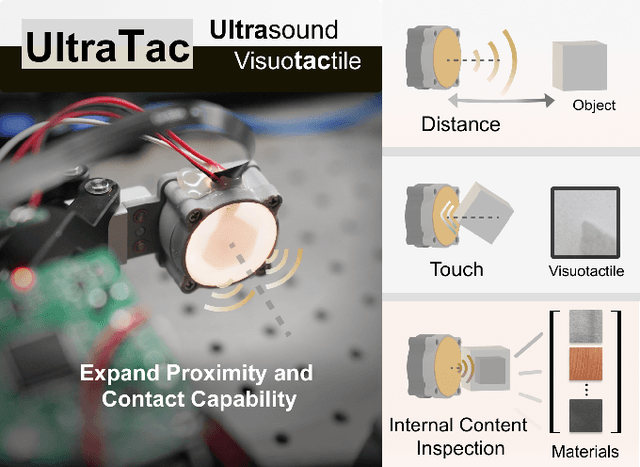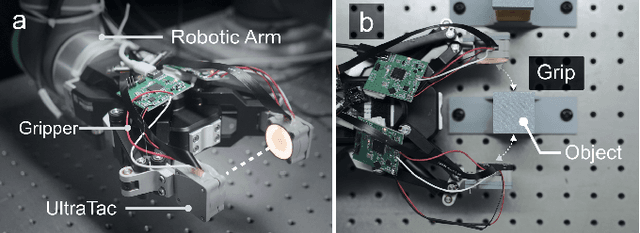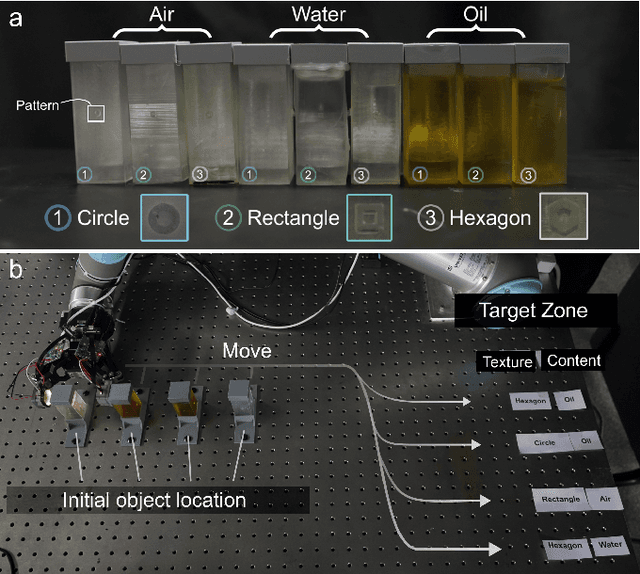Changqing Guo
UltraTac: Integrated Ultrasound-Augmented Visuotactile Sensor for Enhanced Robotic Perception
Aug 29, 2025



Abstract:Visuotactile sensors provide high-resolution tactile information but are incapable of perceiving the material features of objects. We present UltraTac, an integrated sensor that combines visuotactile imaging with ultrasound sensing through a coaxial optoacoustic architecture. The design shares structural components and achieves consistent sensing regions for both modalities. Additionally, we incorporate acoustic matching into the traditional visuotactile sensor structure, enabling integration of the ultrasound sensing modality without compromising visuotactile performance. Through tactile feedback, we dynamically adjust the operating state of the ultrasound module to achieve flexible functional coordination. Systematic experiments demonstrate three key capabilities: proximity sensing in the 3-8 cm range ($R^2=0.90$), material classification (average accuracy: 99.20%), and texture-material dual-mode object recognition achieving 92.11% accuracy on a 15-class task. Finally, we integrate the sensor into a robotic manipulation system to concurrently detect container surface patterns and internal content, which verifies its potential for advanced human-machine interaction and precise robotic manipulation.
Chemistry3D: Robotic Interaction Benchmark for Chemistry Experiments
Jun 12, 2024Abstract:The advent of simulation engines has revolutionized learning and operational efficiency for robots, offering cost-effective and swift pipelines. However, the lack of a universal simulation platform tailored for chemical scenarios impedes progress in robotic manipulation and visualization of reaction processes. Addressing this void, we present Chemistry3D, an innovative toolkit that integrates extensive chemical and robotic knowledge. Chemistry3D not only enables robots to perform chemical experiments but also provides real-time visualization of temperature, color, and pH changes during reactions. Built on the NVIDIA Omniverse platform, Chemistry3D offers interfaces for robot operation, visual inspection, and liquid flow control, facilitating the simulation of special objects such as liquids and transparent entities. Leveraging this toolkit, we have devised RL tasks, object detection, and robot operation scenarios. Additionally, to discern disparities between the rendering engine and the real world, we conducted transparent object detection experiments using Sim2Real, validating the toolkit's exceptional simulation performance. The source code is available at https://github.com/huangyan28/Chemistry3D, and a related tutorial can be found at https://www.omni-chemistry.com.
 Add to Chrome
Add to Chrome Add to Firefox
Add to Firefox Add to Edge
Add to Edge